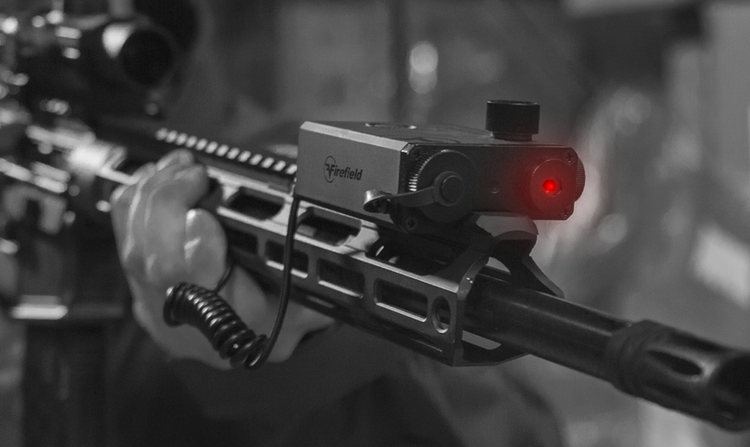A laser, which stands for "Light Amplification by Stimulated Emission of Radiation," is a device that emits focused light through a process known as optical amplification.
The coherent and intense nature of laser light makes it useful in a wide range of applications, including cutting, welding, medical procedures, telecommunications, scientific research, and more. But for tactical purposes, lasers are used for their precision to make visible aiming points which allow users to acquire targets without aiming down their sights.
The FDA recognizes four major hazard classes (I to IV) of lasers, including three subclasses (IIa, IIIa, and IIIb). The higher the class, the more powerful the laser is and the greater the potential to pose serious injury if used improperly.
Many Firefield lasers fall into the category of class IIIa. When these lasers are aimed directly into a person's eye, they can pose a significant hazard, especially for pilots and drivers. The risk of injury becomes more significant if the victim wears glasses, contact lenses, or any eyewear capable of magnifying a laser beam.
Pointing a laser at an aircraft is a federal offense for a good reason. Those found guilty of such an act can face severe penalties, including up to five years in federal prison and fines of up to $250,000. It's worth noting that many of the lasers employed in these malicious activities are green, since green lasers are usually more powerful than their red counterparts. The human eye has heightened sensitivity to green light compared to red, and green lasers are notably brighter, being ten to 50 times brighter than the red variants, making them more visible and suitable for various applications, including pointing at distant objects or creating visible beams.
In low-light situations, while both red and green laser lights are visible, red lasers are often preferred for discreet nighttime shooting as they are less likely to give away a shooter's position. Additionally, red lasers tend to have a longer battery life because they consume less power compared to green lasers. These distinctions in visibility and power consumption make red and green lasers valuable tools in various scenarios, catering to specific needs and preferences.
Ultimately, a shooter’s choice of laser depends on their own unique “hows” and “whys.” Whether for tactical purposes in the dark or for high visibility targeting in broad daylight, understanding the characteristics and the differences between red and green lasers can help users buy their products with confidence and use them to their full potential.

